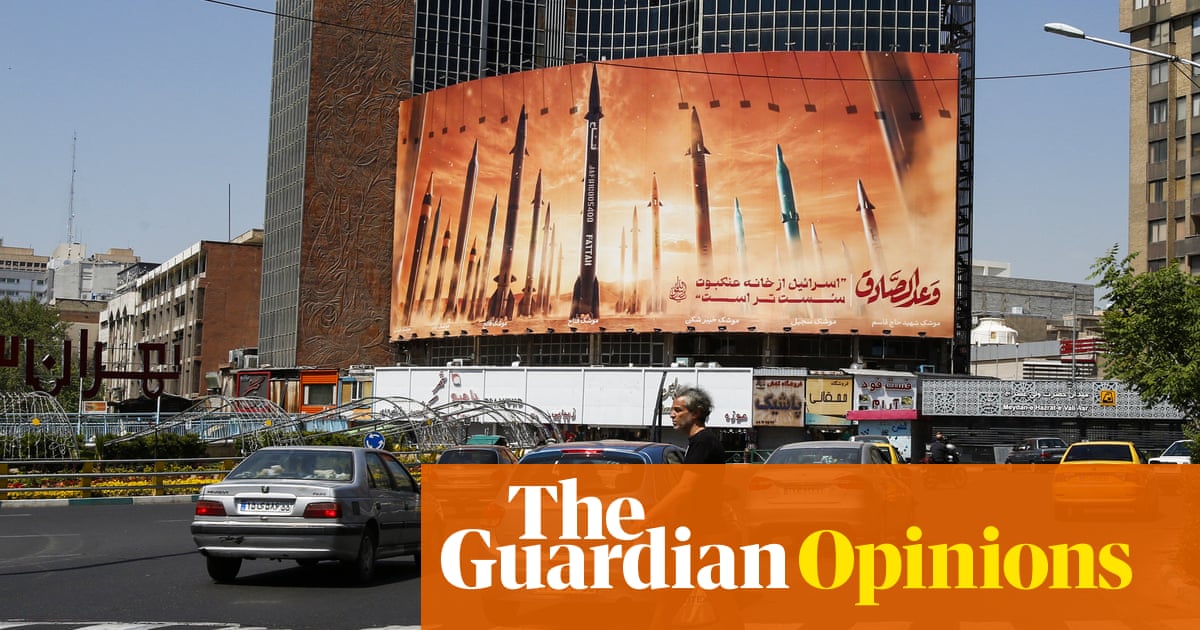
Something should be clarified for the people and governments of the Middle East living with the anxiety caused by a belligerent neighbor called Iran: the United States is not going to fight Iran for you.
That does not mean that the US is not willing and able to fight Iran if necessary. It just means that such necessity must be predicated on the well-being of the United States. President Donald Trump tweeted a warning to the president of Iran earlier this week, but it should not be confused with a desire to go to war. He wrote: “To Iranian President Rouhani:
NEVER, EVER THREATEN THE UNITED STATES AGAIN OR YOU WILL SUFFER CONSEQUENCES THE LIKES OF WHICH FEW THROUGHOUT HISTORY HAVE EVER SUFFERED BEFORE. WE ARE NO LONGER A COUNTRY THAT WILL STAND FOR YOUR DEMENTED WORDS OF VIOLENCE & DEATH. BE CAUTIOUS!”
The president was giving notice that the US will defend itself. If Iran were to attack the US or American interests, the US would respond. It would likely defend freedom of the seas if Iran were to try to impede free movement along the Strait of Hormuz. Trump made it clear that the US will not tolerate misbehavior and intimidation, let alone attacks, from Iran.
Yet this should not be interpreted as a desire to engage militarily with Iran. The American people do not want another war in the Middle East. American servicemen have been killed in the Middle East under every US president since Gerald Ford, who was last in office in 1977. In the last 40 years, almost 7,500 American servicemen have been killed and more than 53,000 have been wounded in the Middle East and neighboring Afghanistan. Almost 4,500 were killed and more than 32,000 were wounded in Iraq between 2003 and 2011. In Afghanistan, where the US is still fighting after Al-Qaeda attacked us from their base there in 2001, more than 2,000 American servicemen have been killed and more than 20,000 have been wounded.
Not all of the American dead in the Middle East were killed fighting wars. Many were killed during rescue operations, humanitarian missions and peacekeeping efforts. Beginning in 1979, Iranian revolutionaries held 52 Americans hostage for 444 days. President Jimmy Carter ordered a rescue attempt, which ultimately failed. Eight American soldiers died. In the early 1980s, the US participated in an international peacekeeping mission in Lebanon. Islamic Jihad, a terrorist organization, detonated two truck bombs at a military barracks and killed 241 American peacekeepers along with 58 French peacekeepers.
In 1990, almost 300 American servicemen died repelling Saddam Hussein’s forces from Kuwait and then defeating them within Iraq. In the 1990s, 19 Americans were killed while defending and providing aid to Kurds in northern Iraq who were under assault by Hussein’s forces. Just since 2014, 61 Americans have been killed and 64 wounded fighting Daesh in Syria and in Iraq. In 2017, only a week into Trump’s term in office, a US Navy SEAL was killed and three were wounded in Yemen while trying to gain intelligence on Al-Qaeda in the Arabian Peninsula.
Trump made it clear that the US will not tolerate misbehavior and intimidation, let alone attacks, from Iran.
Ellen R. Wald
In the US, there are about two million members of the military, between active duty service members and reserves. That is less than 1 percent of the total population of the country, but the military holds a special place in America’s national conscience nonetheless. It is true that only a small portion of the country has borne the sacrifice of military service over the last couple of generations, but the American sentiment is fairly consistent today. The United States is willing and able to fight, but the political will to send US soldiers to fight someone else’s battles is just not there.
If necessary, there are Middle East countries that can address Iran’s belligerence. Israel has a skilled military with top technology. Recently, Israel took on Iranian proxies near the Iraqi border with Syria and evacuated Syrian families at the request of the US, Canada and the European Union. Saudi Arabia has been one of the top five countries globally for military spending in recent years. Other Gulf states like the UAE and Bahrain have gained military experience recently fighting in Yemen. Evidence shows the current administration is willing to supply its allies in the Middle East with the weapons and expertise they need to combat aggression from their enemies. For example, in March, Trump gladly touted massive weapons sales to Saudi Arabia.
The US recognizes the threat posed by Iran, and under Trump the US has been standing against that threat. The administration is unilaterally reinstating severe sanctions and providing rhetorical and other support to the anti-regime advocates within Iran. The US also stands ready to defend its own interests and the free movement of trade, as always. But realistically the world should not expect the American people today to eagerly send more young men and women into harm’s way at the other end of the world.
Ellen R. Wald, Ph.D. is a historian and author of “Saudi, Inc.” She is the president of Transversal Consulting and also teaches Middle East history and policy at Jacksonville University. Twitter: @EnergzdEconomy
Disclaimer: Views expressed by writers in this section are their own and do not necessarily reflect Arab News" point-of-view











